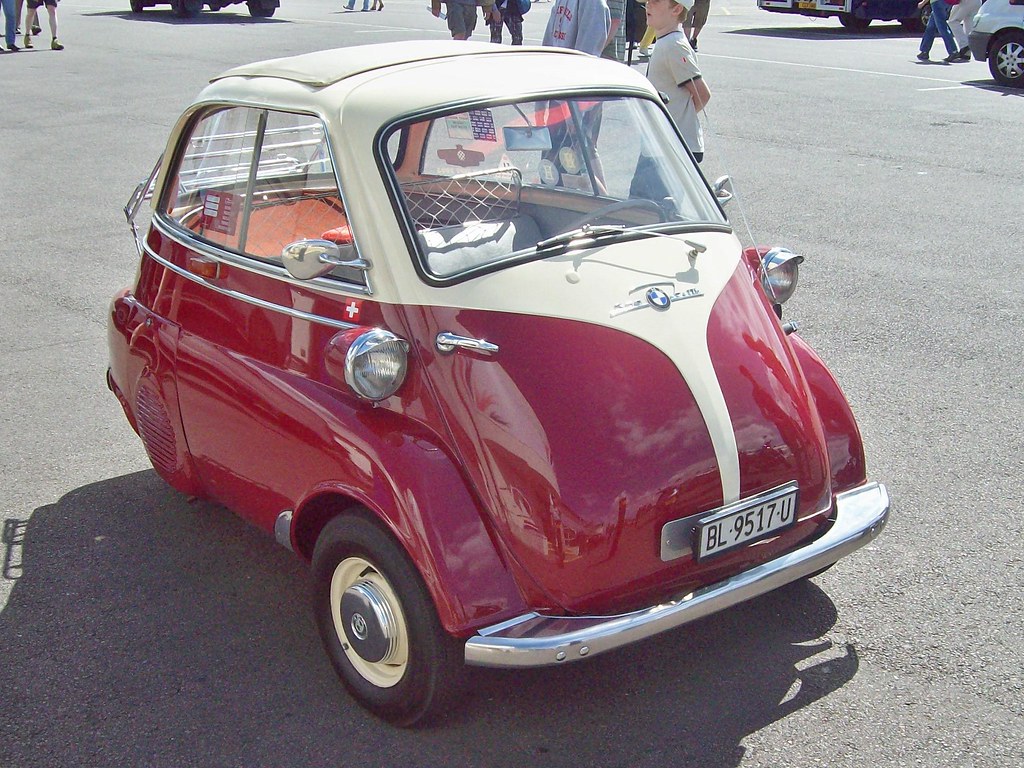
The 1961 BMW Isetta, often affectionately referred to as the “bubble car,” is a standout in the history of the automotive industry. Born out of a period of economic hardship and recovery, the Isetta is a testament to the ingenuity and resilience of designers, engineers, and visionaries who dared to think differently.
Origins and Evolution:
The Isetta’s origins are rooted in the Italian company Iso SpA, best known for its refrigerators and small three-wheeled trucks. Renzo Rivolta, the owner of Iso, had the vision to create a small, economical car for the masses. This led to the development of the original Isetta, a tiny, egg-shaped vehicle with a distinctive front-opening door.
BMW, a company on the brink of bankruptcy in the early 1950s, saw potential in the Isetta design. Securing a licensing agreement from Iso, they set out to adapt the design for their purposes. Notably, the original two-stroke engine was replaced with a more reliable four-stroke motorcycle engine from BMW’s lineup.
The resulting car was the BMW Isetta, a vehicle that quickly gained popularity for its affordability, fuel efficiency, and unique design. The Isetta became particularly appealing during the Suez Canal crisis of 1956 when fuel economy became a top priority due to fuel shortages.
By 1961, the Isetta was well-established in the automotive market. Despite being dwarfed by larger, more powerful vehicles of the era, the Isetta held its own. The car found its niche among urban dwellers who appreciated its compact size and maneuverability in city traffic and tight parking spaces.
1961 BMW Isetta: Specifications and Design:
In terms of mechanics, the 1961 BMW Isetta maintained the single-cylinder, four-stroke motorcycle engine that had been the cornerstone of the design since BMW’s first iteration. The 247cc engine produced around 12 horsepower, facilitating a top speed of 85 kilometers per hour (about 53 miles per hour). These numbers, while not impressive by modern standards, were perfectly suited for the Isetta’s intended use and the road conditions of the time.
From a design perspective, the Isetta’s unique features were retained. Its small, egg-like shape and single front-opening door gave it a distinctive appeal on the roads. The car’s compact dimensions made it perfect for navigating busy city streets and fitting into tight parking spaces.
The interior of the Isetta, while small, was remarkably comfortable for two adults. It had a simple and functional layout, with a bench seat and sufficient headroom, thanks to the tall, bubble-like design of the cabin.
The 1961 Isetta’s suspension was a straightforward, robust setup. The independent front suspension used a leading arm and coil springs. A semi-elliptical leaf spring was directly attached to the swing arm that held the engine and rear wheel at the back. The car also featured drum brakes on all wheels, offering adequate stopping power for the Isetta’s size and speed.
Legacy and Influence:
The 1961 Isetta was a symbol of an era and a key player in BMW’s recovery and evolution as a brand. Despite its production ending in 1962, the Isetta left a significant legacy in the automotive world.
Its influence can be seen in today’s city cars, which prioritize compact dimensions, fuel efficiency, and maneuverability. Additionally, the Isetta is a prized collectible among vintage car enthusiasts, treasured for its unique design and the historical significance it carries.
In summary, the 1961 BMW Isetta is a fascinating tale of innovative design, economic survival, and a bold response to the challenges of its time. Its story serves as a reminder of the power of thinking differently and the impact of responding creatively to economic and societal needs. Experience the history and specifications of the 1961 BMW Isetta, a vehicle that was small in size but had an enormous impact.
